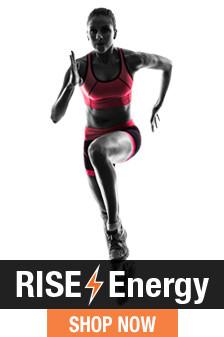Debunking the Greatest Squat Myths!

Stephen Powers
Diet and Training Coach Extraordinaire
Debunking the Greatest Squat Myths!
The squat has been described as the “holy grail” to growing thick, powerful legs. If this is the case, why are do some individuals excel so easily at the squat? Can you truly target the inner or outer portions of your thighs? Questions abound! Not to worry, we’ll do our best to debunk and resolve all of these questions, and more! Grab your protein shake, strap on your work boots, and get ready for some science!
- Can you target the outer portion of your quadriceps by using a narrow stance?
Answer: No, absolutely not. Not without destroying your knees. Fundamentally, the knee acts like a door hinge. It is meant to flex in only one plane. Any attempts to move the knee outside this range of motion will not transfer any load to the muscle, meaning that the only thing left to take the load is your joint!
Likewise, because the inner (vastus medialis) and outer (vastus lateralis) do not cross the hip, there is no way to safely isolate one muscle from the other. They both work together to stabilize the entire knee joint. If you attempt to load one portion of the muscle more than the other, your knees will become unstable and “wobble” during your lifts.

- Should you prevent your knee from traveling in front of your toes?
Answer: In a strict sense, there is no reason that having your knees travel in front of your toes would cause any damage to your joints. This is assuming that your knees are capable of that type of flexion in the first place, which, unless you have arthritis or torn ligaments, should not be an issue. Using the below figure, we can see the forces at play when you arrive at the bottom of a squat:

Observing this simplistic breakdown, we can observe that the force of “Gravity and Weight” is always going to be loaded perpendicular to the ground (gravity pulls straight down, who’d have thought??). Because the quadricep wraps around the knee at the bottom, all of the pulling force will be from the front of the knee, TOWARDS the hips.
Common thought would have you thinking the opposite! Broscience says that all of the force would be pushing directly away from the knee, trying to sheer it away from the joint. If this notion were true, no human would ever be able to squat. They would literally fall face first into the ground if a sheer force was present!
Still don’t believe me? Try this one on for size. At the bottom of this illustrated squat, the entire quadricep is wrapped around the knee, encasing it in extremely tight muscle tissue and tendons. In such a case, the knee is unable to sheer forward, or wobble side to side. The only motion it is capable of is extension (standing up). One could argue that this is the absolute safest position for the knee to be in with regards to stability and balance. This is not to be confused with muscular leverage. Because the torque forces are largest in the bottom position (torque discussed in our next talking point), you are mechanically disadvantage from a muscular standpoint. But let’s save that discussion for another day, shall we….
- Why are some individuals naturally good squatters?
Answer: Continuing our technical discussions, this question has to do with the literal shape of each individuals skeleton. To illustrate why, let’s have a quick review of torque. Torque is the product of a moment arm, and a force. Think of a wrench. The longer your wrench, the easier it is to turn a bolt, yes?

The same concept applies to your femur, commonly known as the thigh bone. A great squatter will tend to have short femurs, while those who struggle with squatting have longer femurs. Looking at the two squatters below, we can see that a shorter femur will have a much lower amount of torque applied to their muscles, compared to those with a longer femur. In fact, our example illustrates that the shorter femur experiences HALF of the same force imparted by a 100-pound weight!
When comparing two squatters, it is imperative to take into account not only the height and weight of an individuals (both can correlate to overall strength), but the mechanical construction of their skeletons! Now, obviously I’ve left out a lengthy discussion regarding torso length, ankle flexibility, and active range of motion. For the purposes of this blog, let’s simply enjoy the idea that just because you can’t squat a lot of weight, it does not imply you are not lifting a comparable torque force!
Take the Fit For Fall Challenge!
Join us for our a Fit for FALL 6 Week Challenge and let's get in shape this FALL! This bundle is designed for anyone looking to trim any remaining excess body fat for a fit physique.
Nutrition, Training Plan, Whey Protein, and more! We give you all the tools to transform your body!









